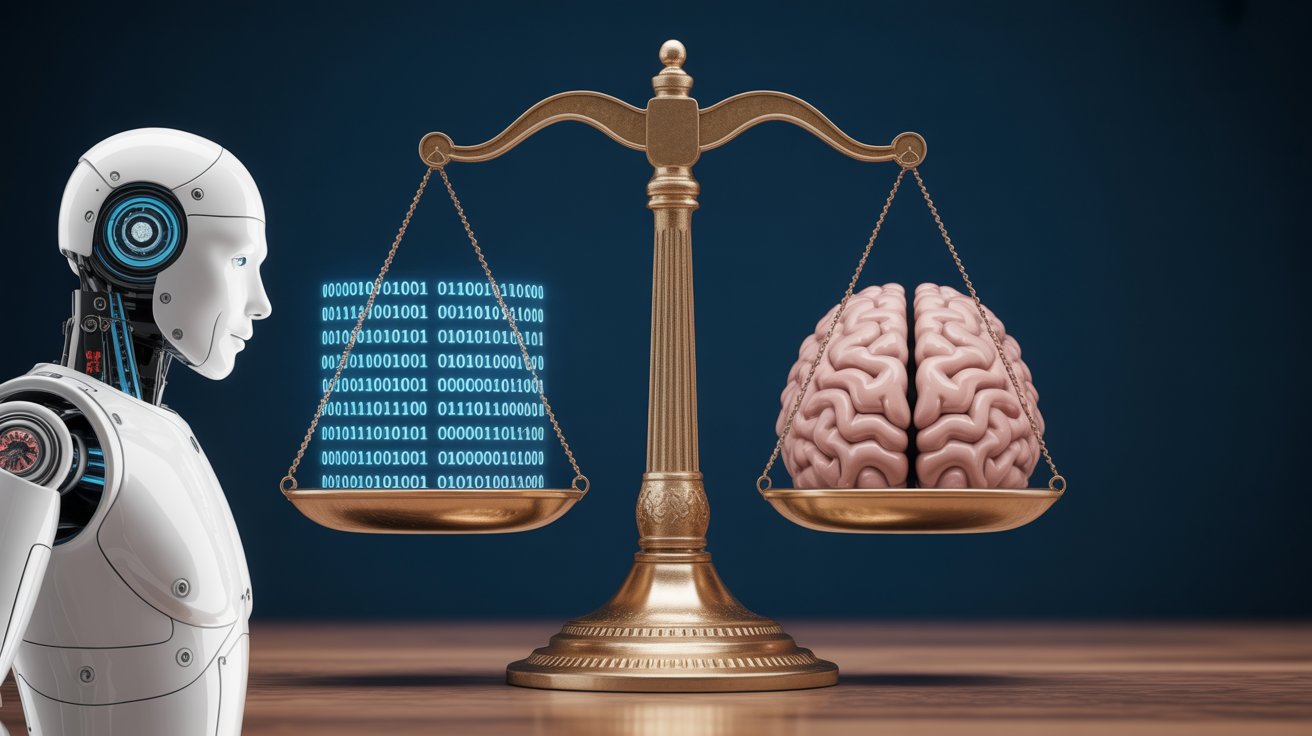
July 22, 2025
The AI Morality Gap: Why Models Struggle with Nuance in Human Ethics
Introduction
As artificial intelligence becomes increasingly embedded in daily decisions — from moderating online content to enforcing platform rules or even advising on mental health — a pressing question arises: can AI understand human morality?
The short answer: not yet. And perhaps, not ever in the way we intuitively expect.
Large language models (LLMs) and other AI systems operate by identifying patterns in vast amounts of data. But morality is not a pattern — it's a debate, a cultural negotiation, a personal dilemma. When these models are asked to draw lines between right and wrong, they often flatten nuance into oversimplified decisions. Worse, they do so at scale.
This blog unpacks why AI struggles with ethical complexity, how moderation systems can amplify bias or cause harm, and what we need to rethink before letting machines decide moral questions.
The Limits of Pattern Recognition
At their core, LLMs like GPT or other moderation tools don't "understand" in a human sense. They predict — statistically, probabilistically — what text or decision should come next based on prior examples.
But ethical decisions often require:
- Contextual awareness: Who is involved? What are the stakes?
- Cultural sensitivity: Different communities view the same action differently.
- Emotional nuance: Intent vs. impact, tone, sarcasm.
- Moral reasoning: What principle should override another in this case?
A language model, no matter how large, is still blind to context beyond text. It doesn't experience empathy, contradiction, regret, or growth — essential aspects of ethical reflection.
The Danger of Binary Judgments
Most automated moderation systems work on rules: if a comment contains certain keywords or sentiment, flag it. If a review sounds aggressive, suppress it. If a post seems harmful, delete it.
The result? Ethical flattening.
- Satire flagged as hate speech
- Trauma disclosures removed for graphic content
- Civic protests mislabeled as violent incitement
- Cultural expressions deemed offensive by universal standards
Because machines are optimized for efficiency, not empathy, they err on the side of caution — but that caution often silences vulnerable voices.
Bias Is Baked Into the Training Data
If morality is shaped by culture, and culture is reflected in data, then the model is learning from past moral assumptions — not present needs.
This leads to:
- Majority dominance: The most frequent moral stance becomes the default.
- Historical prejudice: Past exclusion or bias gets repeated.
- Context stripping: Nuanced discussion gets reduced to sanitized templates.
And when developers train moderation AIs using these same datasets, they replicate the moral blind spots of prior generations — under the illusion of objectivity.
False Neutrality and the Myth of Apolitical AI
AI systems are often marketed as neutral — free from human bias. But there's no such thing as an apolitical moral decision.
For instance:
- Deciding what constitutes "violence" or "harm" is deeply political.
- Choosing which speech is protected and which is prohibited reflects values.
- Determining what's "age-appropriate" or "sensitive" varies by region, religion, and era.
When AI makes these calls invisibly, users are subject to invisible values — often without consent or recourse.
The Human Cost of Moral Automation
The more we outsource moral judgment to AI, the more we risk:
- Silencing minority views: Especially when they challenge dominant norms.
- Reinforcing systemic inequality: Through algorithmic policing of speech.
- Delegitimizing human emotion: When machines can't parse anger from abuse.
- Creating a chilling effect: Where people self-censor to avoid being flagged.
Content moderation, platform rules, even review filtering — all become sites where AI quietly decides whose values count.
When AI Is Asked to Mediate Morality
The issue is compounded when AI is deployed in emotionally charged environments:
- Therapy bots offering advice on grief or trauma.
- Review platforms removing content based on sentiment alone.
- Public forums where heated debate is reduced to terms-of-service triggers.
These spaces require human discretion, not just rules. They require knowing when not to respond, when to ask a clarifying question, when silence is safer than action.
And these are exactly the capabilities machines lack.
Toward a Better Moral Framework in AI
We can’t (and shouldn't) ask machines to feel. But we can design systems that acknowledge their limitations and leave room for human ethics.
Key Design Shifts:
- Human-in-the-loop moderation: Let AI filter, but people decide.
- Transparency in decisions: Show users why something was flagged or removed.
- Appeal pathways: Ensure users can challenge automated judgments.
- Multilingual and multicultural training sets: Reduce moral bias via global inputs.
- Context tagging: Let users signal intent (e.g., satire, critique, personal story).
Ethical AI isn’t about perfect morality — it’s about humble technology.
Conclusion
AI will never be a moral agent. But it can either uphold or erode human morality, depending on how we design, deploy, and oversee it.
The morality gap in AI isn’t a bug — it’s a mirror. It reflects what we’ve taught machines to value, and what we’ve failed to interrogate in ourselves.
As we build systems that moderate, guide, and respond to human behavior, the goal should not be perfect judgment — but imperfect humanity, preserved.
Call to Action:
At Wyrloop, we advocate for transparent AI and human-centered trust systems. Share this post to expose the limitations of moral automation — and join us in building platforms that serve people, not just patterns.